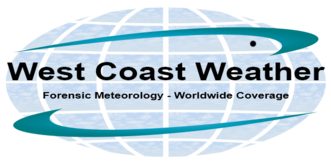Water Scarcity in the West Coast of the US is a big issue. In the simplest terms, there’s not enough water to meet the demands of the population and economy of the west. The two sources of water, surface and ground, are interconnected in so many ways it takes a hydrologist to understand it and
Read More
Record highs fueled west coast wildfires in late August that are still mostly unmanaged. A heat wave at the end of August peaked in the Pacific Northwest on the 19th when it was 109 in Medford, OR and 91 in Seattle, WA but in the 100s east of the Cascades. Over 10,000 firefighters have heard
Read More
Is La Nina coming this winter? The cyclical phenomenon, signified by cooler temperatures in the mid-Pacific Ocean, may be heading toward its next destination in its continual exchange of heat between the poles and the equator. La Nina can usually occur after a strong El Nino which is what we had last winter. Over the
Read More
Typical Formation of Cloud-to-Ground Lightning. Lightning manifests due to the breakdown of the insulating property of dry air. When the localized electrical potential gradient exceeds about three million volts within fifty meters, the phenomenon shoots electrons into a cloud and toward the ground as a stepped leader. Composed of discharges spanning about fifty to a
Read More
Spring 2016’s El Niño Remnants May Affect Tornadoes in the US. Every season and every El Niño are unique but meteorologists are able to make some basic assessments of how such events may affect tornado output based on prior observations. Several factors drive weather, so the higher temperatures in the Pacific related to El Niño
Read More
Snow Storm Damage occurs when substantial amounts collect or when wind drifts collections into larger piles. Mountainous terrain is particularly susceptible to snow storm damage when heavy piles trigger avalanches. Cornices, overhanging ramps of drifted snow, are also likely to build, crack and eventually dangerously collapse, particularly during warmer, sunnier weather. You might want to
Read More
Windstorms, Puget Sound and the Northwest come from two prominent sources: gap winds and extratropical cyclones. Gap winds are caused by a funneling of high pressure, continental air through valleys into zones of low pressure. Sometimes incredible winds can result, such as at Bellingham, WA, which has endured gusts around 115 mph when air traverses
Read More
Aircrafts: flying weather stations, have been equipped to record atmospheric conditions along their flight paths. Another aircraft may not travel anywhere close to the same airspace again for a long time but the data gathered is still useful. Computers input this information, crunch the numbers and can usually forecast general threats. Weather advisories are separated
Read More
Tornado Damage in Washington State seldom makes national headlines but, on average, it is incurred every year. Normally damage is minimal but there have been several deaths and major devastation from a few tornadoes in recent decades. Washington’s deadliest outbreak struck on April 5, 1972 when an F3 spawned over Vancouver and tracked over a
Read More
Hail is best detected by radar, which shoots radiation in all directions and measures the density of the beams that the nearby environment reflects back. Areas of higher reflectivity indicate more atmospheric content, which indicates the storm cell observed is likely close to maturation. This means it has a speedy, tall updraft and copious ambient
Read More
